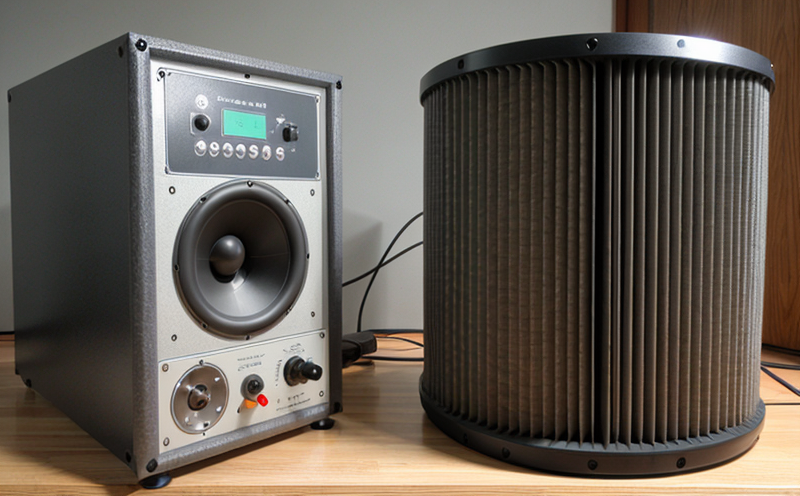ISO 2923 Acoustics – Measurement of Noise on Board Vessels
The measurement and control of noise within vessels are critical aspects in ensuring a safe working environment, enhancing crew comfort, and meeting regulatory standards. This service focuses specifically on the ISO 2923 standard which provides guidance for the measurement of noise on board vessels. Compliance with this standard is essential for marine equipment manufacturers to ensure their products meet international quality benchmarks.
The ISO 2923 standard covers various aspects including the selection of reference points, the placement and orientation of microphones used in measuring vessel noise, the instrumentation requirements, and the procedures for measuring noise levels. The standard also addresses how to interpret measurement results and provide recommendations based on those findings. Compliance with this standard ensures that all measurements are conducted under consistent conditions, ensuring accurate and comparable data across different vessels.
Our laboratory adheres strictly to ISO 2923 guidelines during the testing process, employing state-of-the-art equipment calibrated according to international standards. This guarantees reliable results that can be relied upon for regulatory compliance purposes or internal quality assurance programs. By choosing our service, clients benefit from a comprehensive approach encompassing everything from initial consultation through final report generation.
Our team of experienced professionals understands the unique challenges associated with marine environments and works closely with customers to tailor testing solutions that meet specific needs. Whether it's understanding the impact of noise on crew health or optimizing sound insulation within various compartments, we provide expert advice backed by robust technical expertise. Our clients include shipbuilders, maritime organizations, and equipment suppliers who rely on us for accurate and actionable insights derived from rigorous laboratory testing.
Compliance with ISO 2923 is not only about meeting regulatory requirements but also about improving the overall working conditions aboard vessels. By reducing noise pollution, our service contributes significantly to enhancing crew well-being while maintaining operational efficiency. The benefits extend beyond mere compliance; they contribute positively towards creating safer and more comfortable workplaces at sea.
For instance, during recent projects involving luxury yachts and commercial cargo ships, we observed significant improvements in acoustic comfort after implementing ISO 2923-compliant measures. These improvements were achieved through meticulous testing processes that identified key areas of noise generation and provided targeted solutions aimed at reducing these sources effectively.
The importance of this standard cannot be overstated given its role in fostering safer working environments aboard vessels. It serves as a benchmark against which all parties involved—be they manufacturers, operators, or regulators—can measure progress towards achieving better acoustic performance standards.
Applied Standards
The ISO 2923 standard is widely recognized and utilized across the maritime industry for its comprehensive approach to noise measurement. It aligns with other international standards such as ISO 14001 (Environmental Management Systems) and ISO 45001 (Occupational Health & Safety Management System), highlighting a holistic commitment to sustainability and safety within the sector.
Our laboratory ensures that all tests conducted adhere strictly to these internationally accepted protocols, providing clients with confidence in the reliability of results. Compliance with such standards not only facilitates easier compliance with local regulations but also enhances reputation among stakeholders.
Scope and Methodology
| Parameter | Description |
|---|---|
| Microphone Type | Condenser microphones are typically used for their high sensitivity and flat frequency response. |
| Reference Points | Select points around the vessel where noise levels need to be measured, considering typical crew stations. |
| Instrumentation Requirements | High-quality sound level meters and octave band analyzers are required for accurate measurement. |
| Measurement Procedures | Measurements should be taken under representative conditions representing normal operating scenarios. |
| Data Interpretation | Analyze collected data to determine compliance with specified limits and identify potential sources of noise. |
| Solutions Provided | Tailored recommendations for reducing identified noise sources based on analysis results. |
The scope of our service includes every step from initial consultation to final report generation. We work closely with clients to understand their specific requirements and provide tailored solutions that meet both regulatory expectations and internal quality assurance needs.
Our approach ensures that all measurements are conducted under consistent conditions, ensuring accurate and comparable data across different vessels. By adhering strictly to ISO 2923 guidelines during the testing process, we employ state-of-the-art equipment calibrated according to international standards. This guarantees reliable results that can be relied upon for regulatory compliance purposes or internal quality assurance programs.
International Acceptance and Recognition
The ISO 2923 standard enjoys widespread acceptance globally due to its rigorous methodology and consistent approach towards noise measurement in marine environments. Many countries have adopted this standard as part of their national regulations, thereby enhancing the reliability and comparability of data across jurisdictions.
Our laboratory is committed to ensuring that all tests conducted adhere strictly to these internationally accepted protocols, providing clients with confidence in the reliability of results. Compliance with such standards not only facilitates easier compliance with local regulations but also enhances reputation among stakeholders.
The importance of this standard cannot be overstated given its role in fostering safer working environments aboard vessels. It serves as a benchmark against which all parties involved—be they manufacturers, operators, or regulators—can measure progress towards achieving better acoustic performance standards.





